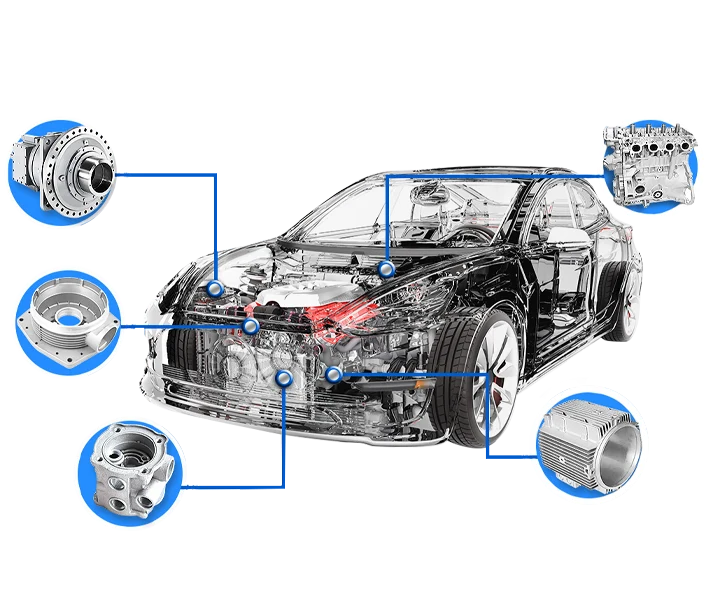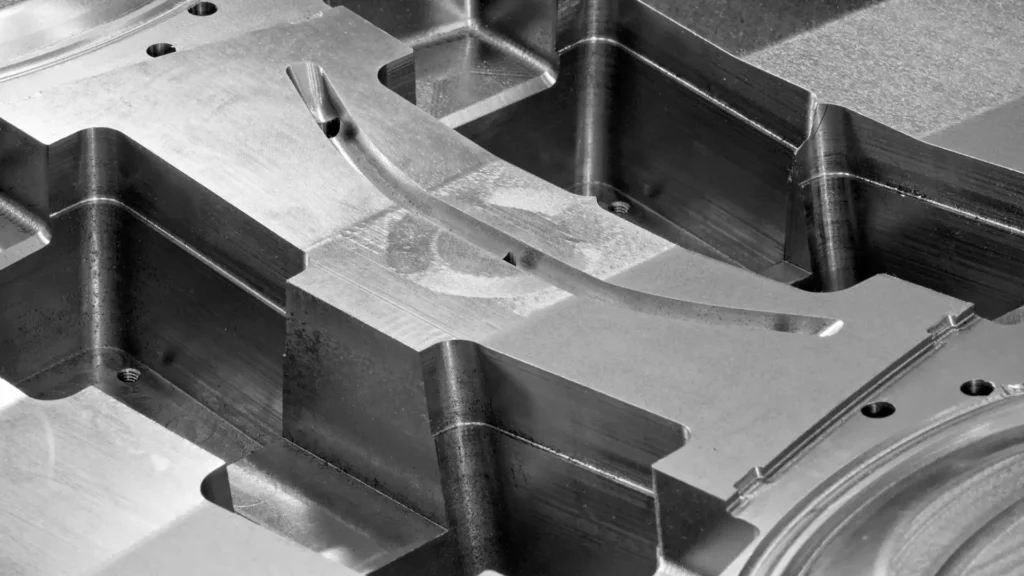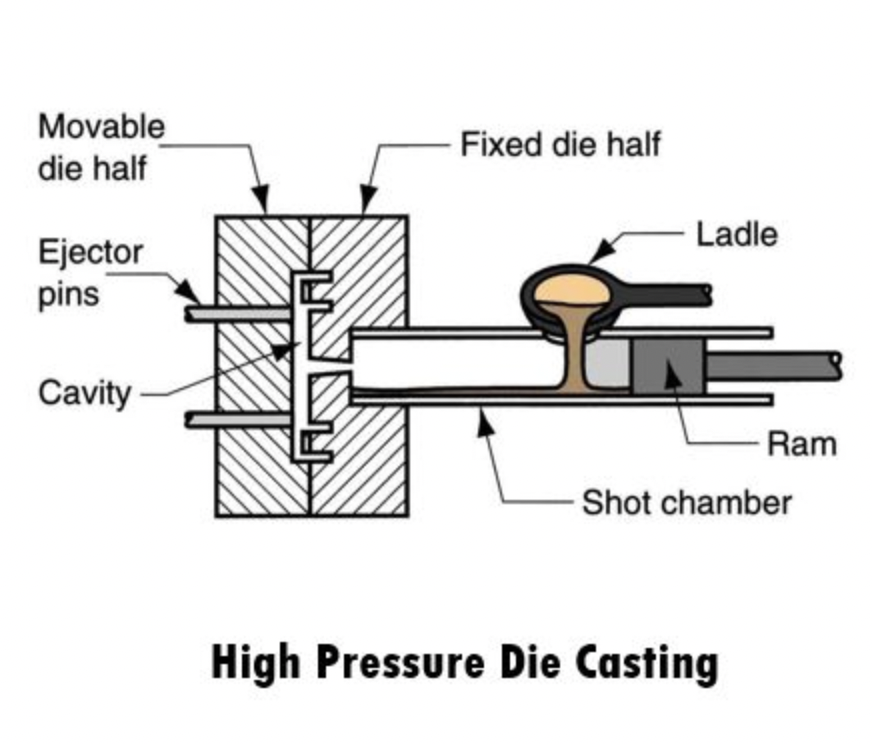في عالم التصنيع والتصنيع, لقد أحدث توجيه CNC ثورة في طريقة إنشاء تصميمات معقدة ودقيقة. بمساعدة التكنولوجيا المتقدمة, يمكن لآلات توجيه CNC قطع وتشكيل مجموعة واسعة من المواد بدقة وكفاءة لا مثيل لها. في هذه المقالة, سوف نستكشف خصوصيات وعموميات توجيه CNC, من مبادئها الأساسية إلى تطبيقاتها في مختلف الصناعات.
ما هو توجيه CNC?

يوجه توجيه CNC لتوجيه التحكم العددي للكمبيوتر, الذي يشير إلى عملية استخدام جهاز يتم التحكم فيه بالكمبيوتر لقطع المواد وتشكيلها وفقًا لتصميم مبرمج مسبقًا. تتيح هذه التقنية نتائج دقيقة ومتسقة, جعلها مثالية لتصنيع الأجزاء والمكونات المعقدة.
ما هي آلة جهاز التوجيه CNC
آلة جهاز التوجيه CNC هي نوع من آلة توجيه CNC مصممة خصيصًا لقطع مواد القطع والتشكيل مثل الخشب, معدن, بلاستيك, والمركبات. تتكون هذه الآلات من أداة قطع متصلة بنظام يسيطر عليه الكمبيوتر يوجه الأداة على طول مسار محدد مسبقًا لإنشاء الشكل أو التصميم المطلوب.
كيف تعمل آلات CNC?
تعمل آلات CNC من خلال تفسير ملف التصميم الرقمي واستخدام تلك المعلومات للتحكم في حركة أداة القطع. يقوم المشغل بإدخال معلمات التصميم في نظام الكمبيوتر, الذي يترجم بعد ذلك الإرشادات إلى حركات دقيقة لأداة القطع. يسمح هذا المستوى من الأتمتة بزيادة الدقة والكفاءة في عملية التصنيع.
عملية خطوة بخطوة لتوجيه CNC
- إدخال التصميم: تتضمن الخطوة الأولى في تشغيل جهاز CNC إدخال معلمات التصميم في نظام الكمبيوتر. يعد ملف التصميم الرقمي هذا بمثابة مخطط لعملية القطع والتشكيل.
- تفسير التعليمات: بمجرد تحميل ملف التصميم, يفسر نظام الكمبيوتر التعليمات ويحولها إلى حركات دقيقة لأداة القطع. تضمن هذه الترجمة أن المنتج النهائي يطابق مواصفات التصميم بدقة.
- توجيه الأداة: تقوم آلة CNC بتوجيه أداة القطع على طول المسار المحدد مسبقًا في ملف التصميم. تتحرك الأداة على طول x, ذ, و Z المحاور, بعد الإرشادات المبرمجة لإنشاء الشكل أو النمط المطلوب.
- تنفيذ عملية القطع: عندما تتحرك أداة القطع عبر المادة, يزيل المواد الزائدة في سلسلة من الحركات الدقيقة. يتم تكرار عملية القطع هذه حتى يتم تحقيق الشكل النهائي أو التصميم, مما يؤدي إلى منتج نهائي يلبي المتطلبات الدقيقة للتصميم.
- مراقبة العملية: خلال عملية القطع, تقوم آلة CNC بمراقبة معلمات القطع بشكل مستمر وضبطها لضمان الاتساق والدقة. تساعد آلية التغذية المرتدة في الوقت الفعلي على تحسين عملية القطع والحفاظ على مراقبة الجودة.
- إكمال المهمة: بمجرد اكتمال عملية القطع, آلة CNC توقف العملية, والمنتج النهائي جاهز لمزيد من المعالجة أو التجميع. كفاءة ودقة آلات CNC تجعلها أدوات لا غنى عنها في صناعة التصنيع.
أنواع آلات توجيه CNC
هناك عدة أنواع من آلات توجيه CNC المتاحة, لكل منها قدرات وتطبيقات فريدة من نوعها.
أ. 3-آلات المحور
بدءًا من آلات توجيه CNC 3 محاور, تم تجهيز هذه الأنظمة بالقدرة على نقل أداة القطع على طول ثلاثة محاور أساسية - x, ذ, و z. يسمح هذا التكوين الأساسي بعمليات القطع والتشكيل الأساسية, جعلها متعددة الاستخدامات ومناسبة لمجموعة واسعة من التطبيقات. 3-تستخدم آلات المحور بشكل شائع في المهام مثل التنميط, نقش, والنحت على مواد مختلفة.
ب. 4-آلات المحور
الانتقال إلى آلات توجيه CNC 4 محاور, تتخذ هذه الأنظمة خطوة إلى الأمام من خلال دمج محور دوار إضافي في المزيج. بالإضافة إلى المحاور الثلاثة الأولية, 4-آلات المحور قادرة على تدوير أداة القطع على طول المحور الرابع, توفير قدرات محسنة لإنشاء تصميمات وأشكال أكثر تعقيدًا. مع القدرة على المناورة حول الأسطح المنحنية والمعالم المعقدة, 4-آلات المحور مناسبة بشكل جيد للتطبيقات التي تتطلب مستوى أعلى من الدقة والتفاصيل.
ج. 5-آلات المحور
في طليعة تقنية توجيه CNC توجد آلات 5 محاور, يشتهر بدقة ودقة لا مثيل لها. بالإضافة إلى المحاور الثلاثة القياسية, 5-تتميز آلات المحور بالقدرة على إمالة وتدوير أداة القطع على طول محورين إضافيين. يسمح هذا المستوى المتقدم من قابلية المناورة بإنتاج تصميمات معقدة ومفصلة للغاية بسهولة. 5-غالبًا ما تستخدم آلات المحور في الصناعات مثل الفضاء, السيارات, والنماذج الأولية, حيث تكون الأشكال الهندسية المعقدة والخطوط الملساء ضرورية.
مزايا وعيوب توجيه CNC
مزايا توجيه CNC
- دقة: توفر آلات توجيه CNC دقة استثنائية, ضمان أن المنتجات تتماشى بدقة مع مواصفات التصميم. هذا أمر بالغ الأهمية في الصناعات التي تتطلب التحمل الضيق والتفاصيل المعقدة.
- كفاءة: تقوم توجيه CNC بتبسيط عمليات الإنتاج, تقليل الوقت وتكاليف العمالة من خلال الأتمتة. إنه يعزز الإنتاجية مع الحفاظ على الإخراج عالي الجودة.
- براعة: يمكن لأجهزة التوجيه CNC متعددة الاستخدامات التعامل مع مواد مختلفة مثل الخشب, معدن, بلاستيك, والمركبات, تقديم الطعام لمجموعة واسعة من الصناعات والتطبيقات.
- التخصيص: يسمح توجيه CNC بسهولة إنشاء تصميمات مخصصة ومعقدة عن طريق برمجة مسارات القطع. تلبي هذه المرونة متطلبات التصميم المحددة بكفاءة.
- تناسق: توفر أجهزة التوجيه CNC جودة ثابتة عبر عمليات الإنتاج, ضمان التوحيد وتلبية معايير عالية في الصناعات مثل السيارات والإلكترونيات.
- فعالية التكلفة: على الرغم من الاستثمار الأولي, يوفر توجيه CNC وفورات طويلة الأجل في التكاليف من خلال انخفاض النفايات, كفاءة تعزيز, وقابلية التوسع للتكيف مع متطلبات السوق.
عيوب توجيه CNC
- تعقيد: تتطلب آلات توجيه CNC التشغيلية والبرمجة مهارات وتدريب متخصصة, والتي يمكن أن تكون عائقًا أمام بعض الشركات دون الخبرة اللازمة.
- يكلف: يمكن أن يكون الاستثمار الأولي في معدات توجيه CNC مهمًا, مما يجعلها التزامًا ماليًا كبيرًا للشركات الصغيرة أو تلك التي لديها ميزانيات محدودة.
- صيانة: تتطلب آلات توجيه CNC صيانة وصيانة منتظمة لضمان الأداء الأمثل, والتي يمكن أن تضيف إلى تكاليف التشغيل الإجمالية والتعطل.
- مرونة محدودة: بينما توفر آلات توجيه CNC تنوعًا في قطع المواد, قد يكون لديهم قيود من حيث حجم وشكل الشغل الذي يمكنهم التعامل معه, تقييد بعض إمكانيات التصميم.
ما هي المواد التي يمكن قطعها على جهاز توجيه CNC?
يمكن لأجهزة التوجيه CNC قطع مجموعة واسعة من المواد, بما في ذلك الخشب, معدن, بلاستيك, الأكريليك, والمركبات. هذا التنوع يجعلها مثالية لمجموعة متنوعة من الصناعات, من الخشب إلى الفضاء.
- الغابة: تتفوق أجهزة التوجيه CNC في قطع مجموعة متنوعة من أنواع الخشب, بما في ذلك الأخشاب الصلبة مثل البلوط, القيقب, والجوز, وكذلك الأخشاب الأكثر ليونة مثل الصنوبر والأرز.
- البلاستيك: أجهزة التوجيه CNC بارعة أيضًا في قطع أنواع مختلفة من البلاستيك, مثل الأكريليك, PVC, البولي, والنايلون.
- المعادن: في حين أن جميع أجهزة التوجيه CNC مصممة لقطع المعادن, يمكن لبعض النماذج المجهزة بالأدوات والميزات اللازمة التعامل مع الألومنيوم, النحاس, نحاس, والمعادن الناعمة الأخرى.
- المركبات: تُستخدم أجهزة التوجيه CNC بشكل شائع لقطع المواد المركبة مثل الألياف الزجاجية, ألياف الكربون, و laminates
- مواد تشبه الرغوة والرغوة: يمكن لأجهزة التوجيه CNC أيضًا قطع الرغوة والمواد التي تشبه الرغوة, مثل البوليسترين الموسع (EPS) ورغوة البولي يوريثان.
تطبيقات توجيه CNC
إن براعة وكفاءة أجهزة التوجيه CNC تجعلها أدوات لا غنى عنها لمجموعة واسعة من التطبيقات, تمكين الشركات المصنعة من تحقيق تصميمات معقدة, تبسيط عمليات الإنتاج, وتعزيز جودة المنتج.
النجارة
أنشأت تقنية توجيه CNC نفسها كحجرات في صناعة النجارة الخشبية, تزويد عمال الخشب بالأدوات والقدرات اللازمة لإنشاء تصميمات معقدة, قطع الأشكال المعقدة, وإنتاج أثاث وخزائن مخصصة. من صياغة أعمال الزخرفة إلى تصميم قطع أثاث مخصصة, توفر أجهزة التوجيه CNC إمكانيات قطع وتشكيل دقة ترفع حرفية النجارة الخشبية إلى ارتفاعات جديدة من الإبداع والدقة.
تصنيع المعادن
في عالم تصنيع المعادن, تلعب تقنية توجيه CNC دورًا محوريًا في إنتاج الأجزاء المعدنية بدقة استثنائية ودقة. من خلال استخدام أجهزة التوجيه CNC, يمكن للمصنعين المعادن قطع وتشكيل مكونات معدنية, بما في ذلك تلك المستخدمة في صب الألومنيوم, مع التفاصيل الدقيقة والاتساق. إن القدرة على إنشاء تصميمات معقدة وقطع دقيقة تجعل CNC توجيه أداة لا غنى عنها لمكونات التصنيع للصناعات المتنوعة, من السيارات والفضاء إلى الإلكترونيات والآلات.
تصنيع البلاستيك
بصورة مماثلة, تجد تقنية توجيه CNC تطبيقًا واسع النطاق في صناعة تصنيع البلاستيك, حيث يتم استخدامه لقطع الأجزاء البلاستيكية وتشكيلها, قوالب, والنماذج الأولية بدقة لا مثيل لها والتكرار. من إنشاء لافتات مخصصة وعرض إلى إنتاج مكونات بلاستيكية معقدة لمختلف المنتجات, تمكن أجهزة التوجيه CNC من المصنعين البلاستيكيين من تحقيق نتائج عالية الجودة بكفاءة وفعالية من حيث التكلفة. إن براعة توجيه CNC في التعامل مع أنواع مختلفة من البلاستيك تجعلها حلاً متعدد الاستخدامات لتلبية الاحتياجات المتنوعة لقطاع تصنيع البلاستيك.
تعاون مع بيان فريق Die
إذا كنت تبحث عن شركة مصنعة من الألومنيوم المصنعة من الألومنيوم الذي يموت الصب, التصنيع باستخدام الحاسب الآلي, وخدمات التشطيب, لا تنظر إلى أبعد من فريق Die Die. مع سنوات من الخبرة والخبرة في الصناعة, تلتزم فريق Bian Die Cast بتوفير منتجات عالية الجودة وخدمة عملاء استثنائية.
خاتمة
ختاماً, توجيه CNC هي تقنية قوية حولت صناعة التصنيع من خلال توفير دقة لا مثيل لها, كفاءة, والتنوع. سواء كنت في الأعمال الخشبية, تصنيع المعادن, أو تصنيع البلاستيك, توفر آلات توجيه CNC حلاً فعالًا من حيث التكلفة لإنتاج أجزاء ومكونات معقدة بسهولة. يمكن أن تساعدك الشراكة مع الشركة المصنعة الموثوقة مثل Bian Die Cast على نقل مشروعك إلى المستوى التالي وتحقيق النجاح في مساعيك التصنيع.

















